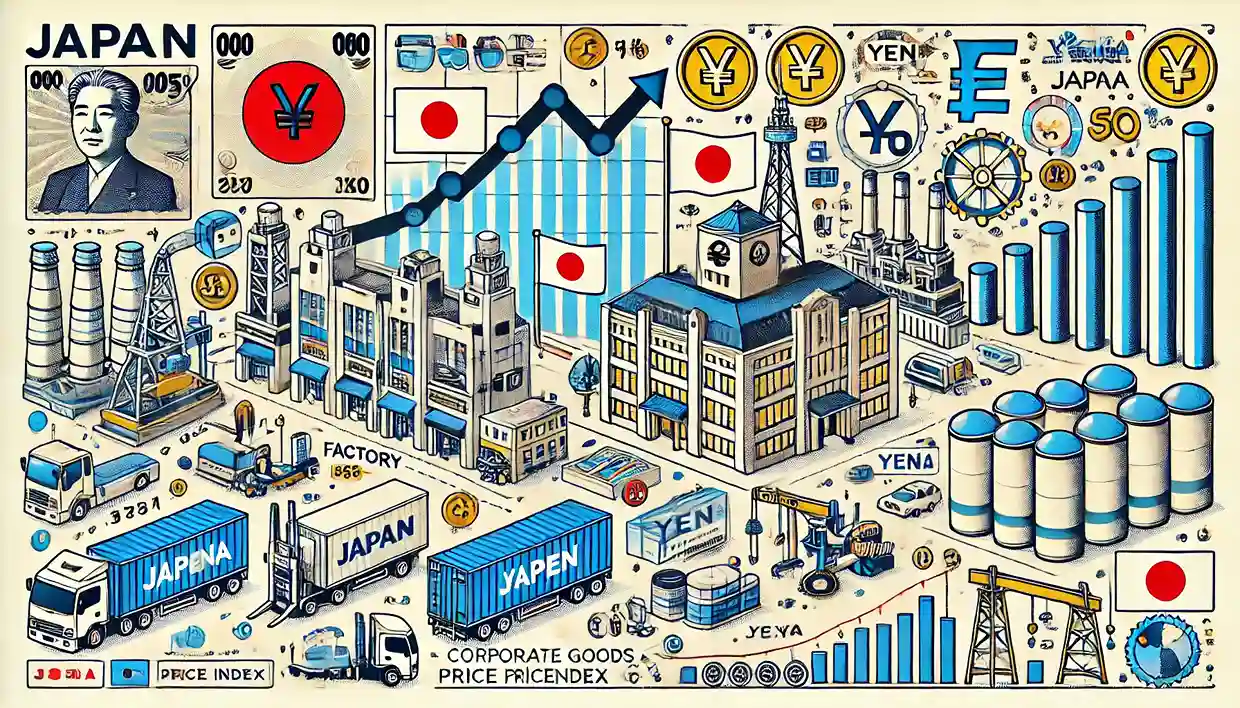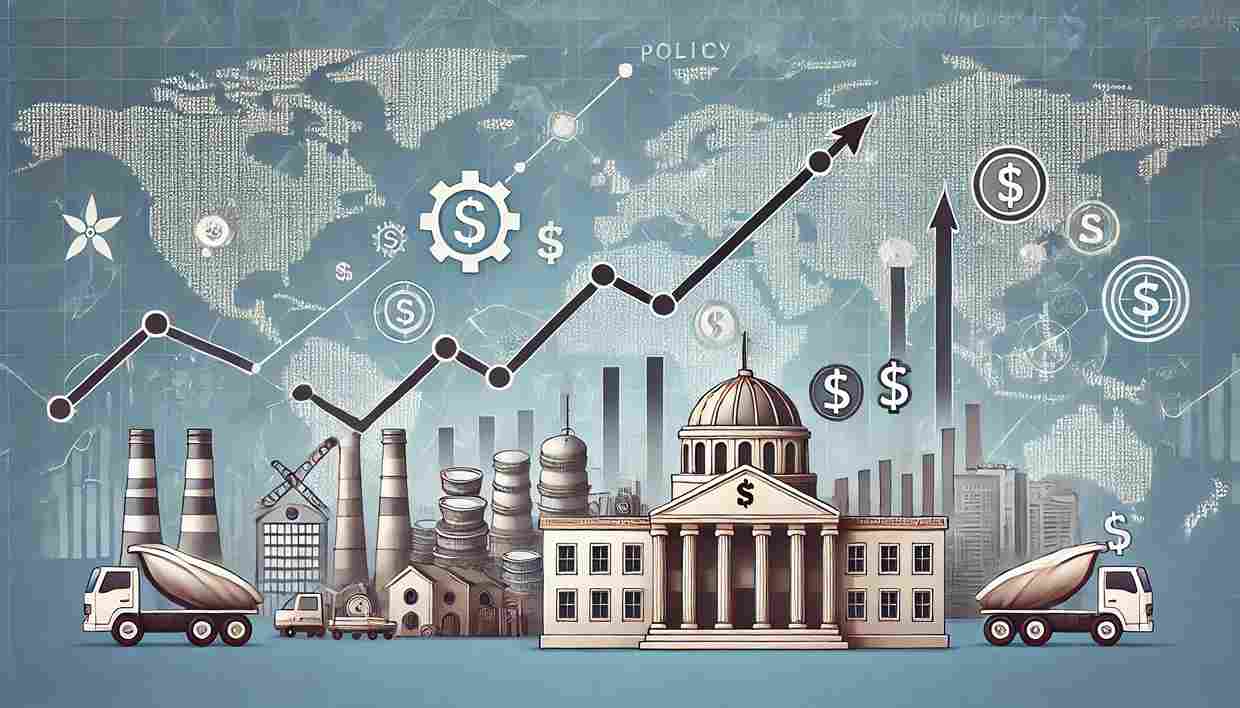The Corporate Goods Price Index (CGPI) in Japan plays a crucial role in understanding the economic health of the nation. This detailed article will delve into what CGPI is, how it works, its impact on the economy, and its relevance to businesses and investors. By the end, you’ll have a comprehensive grasp of this important economic indicator.
What is the Corporate Goods Price Index (CGPI)?

The Corporate Goods Price Index, or CGPI, measures the price changes of goods traded between companies within Japan. Essentially, it tracks how much companies are paying for the goods they need to produce their own products. Think of it as a way to gauge inflation at the producer level before it trickles down to consumers.
The History of CGPI
Japan’s CGPI has a rich history dating back to the early 20th century. Initially developed to understand post-war economic conditions, it has since evolved to provide insights into the complex modern economy. Over the decades, the index has undergone several revisions to better reflect changes in the industrial landscape and trading practices.
How CGPI is Calculated
Components of CGPI
The CGPI comprises various components, including raw materials, intermediate goods, and final products. Each component has a different weight in the index, reflecting its importance in the overall production process. For example, steel prices might have a higher weight than cotton because steel is used in a wide range of industries.
The Calculation Process
Calculating the CGPI involves collecting price data from thousands of businesses across Japan. The Bank of Japan, which oversees the index, gathers this data monthly. They use a fixed-base year method, meaning the index is set to 100 in a chosen base year, and subsequent prices are compared to this baseline.
The Importance of CGPI
Economic Indicator
The CGPI is a vital economic indicator. It helps policymakers understand inflationary pressures within the production sector. When the CGPI rises, it often signals that consumer prices will also increase in the future. Conversely, a falling CGPI might indicate upcoming deflation.
Business Planning

For businesses, the CGPI is an essential tool for planning. Companies use the index to anticipate changes in input costs and adjust their pricing strategies accordingly. For instance, if a manufacturer sees that the price of raw materials is rising, they might increase their product prices to maintain profit margins.
CGPI vs. Consumer Price Index (CPI)
Differences Between CGPI and CPI
While the CGPI focuses on the prices of goods traded between companies, the Consumer Price Index (CPI) tracks the prices of goods and services purchased by consumers. The CGPI is more about wholesale prices, whereas the CPI reflects retail prices.
Interconnection Between CGPI and CPI
The CGPI and CPI are interconnected. A rise in CGPI usually precedes a rise in CPI. This is because increased costs for businesses often lead to higher prices for consumers. Understanding both indices can provide a comprehensive view of inflation dynamics within an economy.
Factors Influencing CGPI
Global Commodity Prices
One of the significant factors influencing CGPI is global commodity prices. Japan relies heavily on imported raw materials. Changes in the prices of commodities like oil, metals, and agricultural products can significantly impact the CGPI.
Exchange Rates
Exchange rates also play a crucial role. Since Japan imports many goods, a weaker yen makes imports more expensive, driving up the CGPI. Conversely, a stronger yen can help reduce the index.
Recent Trends in Japan’s CGPI

Post-Pandemic Recovery
Post-pandemic, Japan’s CGPI has shown significant volatility. Supply chain disruptions and fluctuating global demand have caused sharp movements in the index. Understanding these trends is crucial for businesses and policymakers.
Technological Advancements
Technological advancements have also influenced the CGPI. Innovations in production processes can lead to lower costs and a subsequent decrease in the index. However, new technologies can also create temporary price spikes as companies invest in upgrading their systems.
Impact of CGPI on Different Sectors
Manufacturing Sector
The manufacturing sector is particularly sensitive to changes in the CGPI. Higher input costs can squeeze profit margins and force manufacturers to increase product prices. Conversely, a falling CGPI can be a boon for manufacturers, reducing their costs and potentially boosting profits.
Service Sector
While the service sector is less directly impacted by the CGPI, changes in the index can still influence service prices. For example, if a service provider relies on products that have become more expensive, they may need to raise their prices to cover increased costs.
Policy Implications of CGPI

Monetary Policy
The CGPI is a critical input for monetary policy decisions. The Bank of Japan monitors the index closely to gauge inflationary pressures. A rising CGPI might prompt the central bank to tighten monetary policy to prevent runaway inflation.
Fiscal Policy
Fiscal policy is also influenced by the CGPI. Higher prices can lead to increased tax revenues from higher-priced goods and services. However, if the CGPI rises too quickly, it can hurt economic growth, prompting the government to consider stimulus measures.
Challenges in Measuring CGPI
Data Collection Issues
One of the main challenges in measuring the CGPI is data collection. Gathering accurate price data from thousands of businesses is a massive task. Ensuring the reliability and timeliness of this data is crucial for the index’s accuracy.
Adjusting for Quality Changes
Another challenge is adjusting for quality changes. As products evolve and improve, their prices might change. The Bank of Japan must account for these changes to ensure the CGPI reflects true price movements rather than quality improvements.
Future Outlook for Japan’s CGPI
Economic Recovery
Japan’s economic recovery from recent global disruptions will significantly impact the CGPI. As supply chains stabilize and demand patterns normalize, the index is expected to see more predictable movements.
Sustainability Trends

Sustainability trends are also likely to influence the CGPI. As companies adopt greener practices, there may be initial cost increases that affect the index. However, over time, these practices could lead to more stable and possibly lower input costs.
Conclusion
Understanding Japan’s Corporate Goods Price Index is essential for anyone involved in the Japanese economy. From businesses planning their strategies to policymakers making crucial decisions, the CGPI provides invaluable insights into the price dynamics at the producer level. Keeping an eye on this index can help predict broader economic trends and prepare for future changes.
FAQs
What is the base year for the CGPI?
The base year for the CGPI is periodically updated to reflect current economic conditions. The most recent base year is typically chosen to provide a relevant and accurate benchmark.
How often is the CGPI updated?
The CGPI is updated monthly. This frequent update helps ensure that the index reflects the latest price movements and economic conditions.
Can the CGPI predict consumer inflation?
Yes, the CGPI often serves as a leading indicator for consumer inflation. Rising costs for producers usually lead to higher prices for consumers.
How does the CGPI impact small businesses?
Small businesses are impacted by the CGPI through changes in input costs. Rising input prices can squeeze profit margins, while falling prices can provide relief.
Is the CGPI relevant for international investors?
Absolutely. International investors monitor the CGPI to understand Japan’s economic health and make informed investment decisions.
